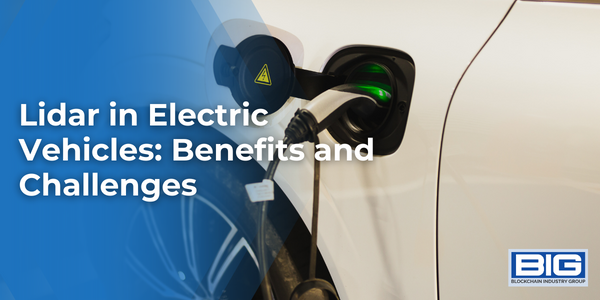
Lidar, or Light Detection and Ranging, is a technology that uses lasers to create a 3D map of the surrounding environment. Lidar works by emitting laser pulses and measuring the time it takes for the pulses to bounce back after hitting an object or surface. By analyzing the reflected pulses, it is possible to create a 3D map of the environment, including the distance and location of objects and features. Lidar sensors can operate at long range, detecting objects and features with millimeter-level accuracy, and can be used in a wide range of lighting and weather conditions.
Lidar has become an essential component in the development of driverless cars and electric vehicles, as it allows these vehicles to navigate and understand their surroundings in real-time. However, there are also some advantages and disadvantages to using lidar in these applications.
One advantage of using lidar in driverless cars and electric vehicles is that it provides highly accurate and detailed 3D mapping of the surrounding environment. Lidar sensors can detect objects and features with millimeter-level accuracy, making it possible for these vehicles to navigate safely and efficiently. Lidar can also operate in a wide range of lighting and weather conditions, making it a reliable and robust technology for autonomous navigation.
Another advantage of lidar is that it can operate at long range, allowing driverless cars and electric vehicles to detect and avoid obstacles from a distance. This can improve safety and reduce the likelihood of collisions, as the vehicle has more time to react and adjust its trajectory. Lidar can also detect and classify different types of objects, such as pedestrians, vehicles, and traffic signals, further enhancing the capabilities of these vehicles.
However, there are also some disadvantages to using lidar in driverless cars and electric vehicles. One disadvantage is that lidar sensors can be expensive, with some high-end systems costing tens of thousands of dollars. This can be a significant cost for manufacturers, particularly if they are producing a large number of vehicles.
Another disadvantage of lidar is that it can be affected by certain types of interference, such as sunlight or heavy rain, which can degrade its performance. This can be a concern for autonomous vehicles operating in challenging weather conditions. Lidar can also be vulnerable to external threats, such as vandalism or tampering, which could compromise the safety and reliability of these vehicles.
Pros and Cons of 5 Top Programming Languages
—
Tesla Battery Technology: Powering the Electric Revolution
—
The Cloud Computing Revolution is Transforming Work
Finally, lidar can be bulky and heavy, which can be a challenge for electric vehicles that are trying to maximize range and efficiency. This may require trade-offs in terms of vehicle design and performance, as well as the overall cost of the vehicle.
In conclusion, lidar is a powerful and reliable technology for autonomous navigation and object detection in driverless cars and electric vehicles. It provides highly accurate and detailed 3D mapping of the surrounding environment, operates at long range, and can detect and classify different types of objects. However, it can be expensive, susceptible to interference, vulnerable to external threats, and bulky and heavy. These factors should be considered when deciding whether to use lidar in these applications.



